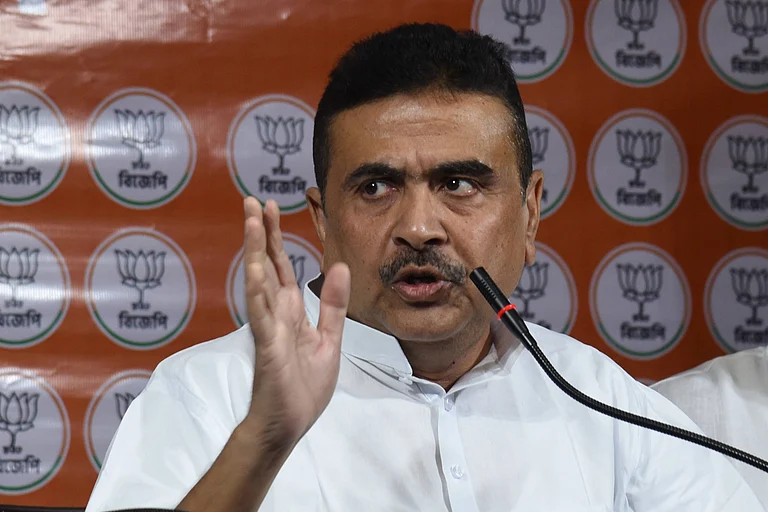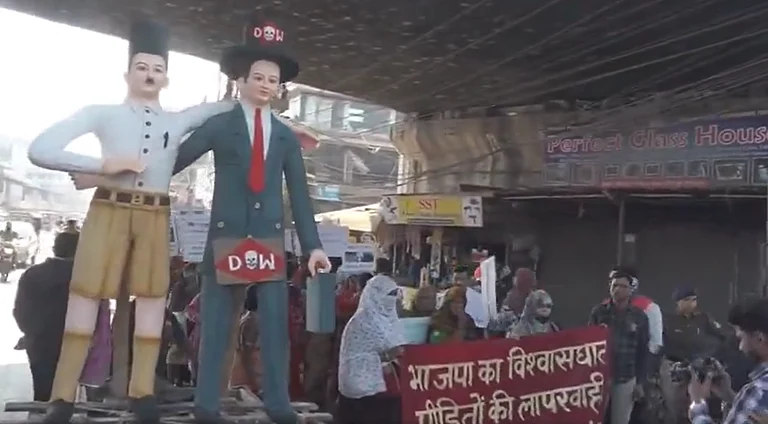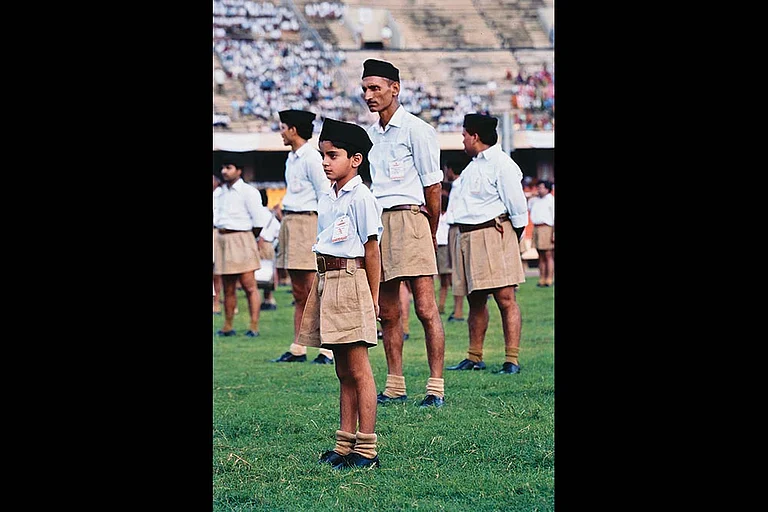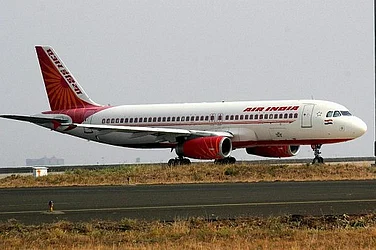
Dakshina Kannada and Udupi districts in particular have emerged as the RSS’ bastions. The organisation has a particularly strong network of shakhas across these two districts.
The BJP’s geographical reach also mirrors the RSS’ network across Karnataka. In regions where the RSS has a strong network, it has translated into a strong BJP presence.
The mobilisation around the Kannada identity is particularly strong in the Old Mysore region, including Bengaluru, where the RSS is relatively weak.
The Rashtriya Swayamsevak Sangh’s (RSS) presence in Karnataka goes back to the mid-1930s. The first shakha was set up in 1935 in the town of Chikkodi. Since then (as of 2021), the RSS has expanded to around 4,600 shakhas. In regions like coastal Karnataka, the RSS has established itself as one of the preeminent socio-religious organisations. Its success in coastal, central and northern Karnataka has played a key role in the Bharatiya Janata Party (BJP) emerging as a major political force. At the same time, regions like Old Mysore offer the RSS an opportunity to grow. Old Mysore is where the RSS and the BJP have had a limited footprint. With 2025 marking the 100th anniversary of the RSS’ establishment, it is a good time to relook at the organisation’s successes and future potential in Karnataka. This piece looks back at the RSS’ origins, growth and examines prospects of expansion in the state.
Coastal Karnataka: The Origins of Hindu Awakening
The regions that make up today’s Karnataka have a diverse history. Parts of the southern and central regions of the state were a part of the Mysore kingdom. The southern part of coastal Karnataka, comprising Dakshina Kannada and Udupi regions, were part of the Madras Presidency. Other parts of northern Karnataka were a part of the Bombay Presidency. Finally, certain eastern regions of the state came under the Hyderabad Nizam. The origins of Hindu awakening in Karnataka can be traced back to the coastal region, with the arrival of the Basel Mission in the mid-1800s. Through their network of educational institutions, the Basel Mission and other Missionary groups imparted Western English education. Alongside providing education, Missionaries started to convert large number of Hindus. This was the initial trigger for Hindu Awakening, as Hindu organisations quickly came to terms with the threat of religious conversions. By the late-1800s, the Arya Samaj and the Brahmo Samaj helped organise Hindu society and challenged missionary activities. They achieved this through a network of schools and other educational institutions. This laid the groundwork for the RSS’ rise in the late 1930s and early 1940s.
RSS’ Coastal Karnataka Stronghold
Dakshina Kannada and Udupi districts in particular have emerged as the RSS’ bastions. The organisation has a particularly strong network of shakhas across these two districts. During the initial years after Independence, while the RSS built an increasingly strong network of shakhas, its support base was significantly narrow. A large share of its members was from a particular section of the district’s Brahmins—the Goud Saraswat Brahmins. This became visible in the political arena, where the Jana Sangh enjoyed very limited success.
The 1970s saw a shift in the RSS’ support base. There were two key elements that accelerated this shift. First was Indira Gandhi’s declaration of Emergency in 1975. The Emergency was met with significant opposition across coastal Karnataka. Opposition to the Congress grew, as people mobilised against the Emergency. The RSS was seen as one of the key critics of Indira Gandhi’s politics. While doing fieldwork in Dakshina Kannada, several individuals highlighted how the RSS helped organise the anti-Emergency protests. The RSS’ central role in these protests was a key factor in their expanded support base.
Secondly, the Congress Government in Karnataka under Devaraj Urs implemented a wave of land reforms. These reforms were particularly impactful across coastal Karnataka. Caste groups like the Bunts, who were primarily impacted by these reforms, moved away from the Congress. As land reforms overlapped with the anti-Emergency agitation, the RSS’ support base significantly increased.
RSS’ Growth and the BJP’s Success
The results of the 1983 elections provide strong evidence in favour of an expansion in the RSS’ support base. Since the 1950s, the Jana Sangh has regularly contested elections across Dakshina Kannada, without much success. In 1983, when the BJP (Jana Sangh’s successor) contested, it enjoyed significant electoral success. It managed to bag a total of 18 seats. Out of these, seven seats came from the coastal Karnataka region. Since then, coastal Karnataka has emerged as a bastion of the BJP. The BJP has held on to the Dakshina Kannada Lok Sabha seat since 1991. Likewise, the BJP has demonstrated similar dominance in the Uttara Kannada and Udupi Lok Sabha seats. This success has translated into a good performance in the assembly segments as well.
The RSS’ network of shakhas has proved to be an important element in the BJP’s success. The RSS’ robust network on the ground provides the BJP with important resources to organise their campaign. During election time, the BJP relies on RSS’ volunteer network and its organisational base. It also gives the BJP a distinct advantage vis-à-vis the Congress. Due to the RSS’ support, the Congress finds it very difficult to match the BJP’s game on the ground. The RSS’ affiliated organizations, like the Backward Caste Morcha, have further helped expand their support base to include crucial OBC groups. The rise in OBC support has been a critical element of the BJP’s success. Political scientist Muzaffar Assadi underscored this by citing the BJP’s growing support base among the numerically strong OBC group—the Billavas.
Limits of Geographical Expansion
Politically, Karnataka is an outlier amongst the other four south Indian states. It is the only state in the south, where the BJP has enjoyed significant elec toral success. It has emerged as one of the two dominant political parties in the state. In the early 1990s, well-known academic James Manor underlined that Karnataka could become the BJP’s stepping stone to expand across south India.
While the BJP emerged as one of the dominant players in Karnataka, there were certain limits to the party’s growth. In 2008 and in 2018, when the BJP emerged as the single-largest party in the Karnataka assembly, it fell agonisingly short of a majority. Yet, both these results represent the BJP’s ‘peak’ performance in Karnataka. A key challenge for the BJP has been the geographical concentration of its strongholds. While the party is reasonably strong across coastal, northern and central Karnataka, the party has a limited presence in the Old Mysore region. This geographical limitation has proven to be the BJP’s biggest challenge.
Interestingly, the BJP’s geographical reach also mirrors the RSS’ network across Karnataka. In regions where the RSS has a strong network, it has translated into a strong BJP presence. The relative weakness of the BJP and the RSS in the Mysore region also brings with it opportunities for future growth. Can the RSS replicate its organisational success in coastal Karnataka in the Old Mysore region? There are two elements that will be crucial to the RSS and BJP’s success.
Firstly, the RSS will need to tap into the growing Kannada identity movement. The mobilisation around the Kannada identity is particularly strong in the Old Mysore region, including Bengaluru, where the RSS is relatively weak. This provides it an important opportunity. Secondly, the Old Mysore region has traditionally been a Janata Dal-Secular (JD(S)) stronghold. With the JD(S) in decline, the BJP has an opportunity to tap into the former’s Vokkaliga vote base.
As the RSS celebrates its 100th anniversary, the organisation has come a long way in Karnataka. It has entrenched itself in its strongholds and offered political support to the BJP to expand its political footprints in these regions. As the BJP battles with its principal opponent, the Congress, it would lean heavily on the RSS to expand its presence in the state.
(Views expressed are personal)
MORE FROM THIS ISSUE
Sanjal Shastri is assistant professor, Flame University, Pune
This story appeared as 'One Hundred Years Of...Footprint In The South' in the print edition of Outlook magazine’s October 21 issue titled Who is an Indian?, which offers a bird's-eye view of the Rashtriya Swayamsevak Sangh (RSS), testimonies of exclusion and inclusion, organisational complexities, and regional challenges faced by the organisation.































